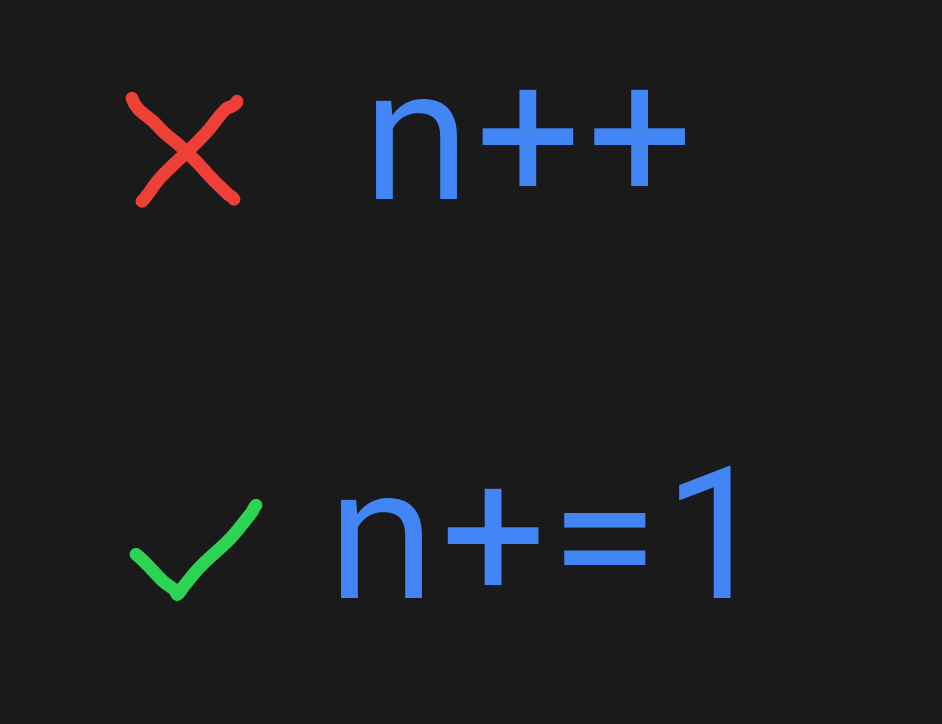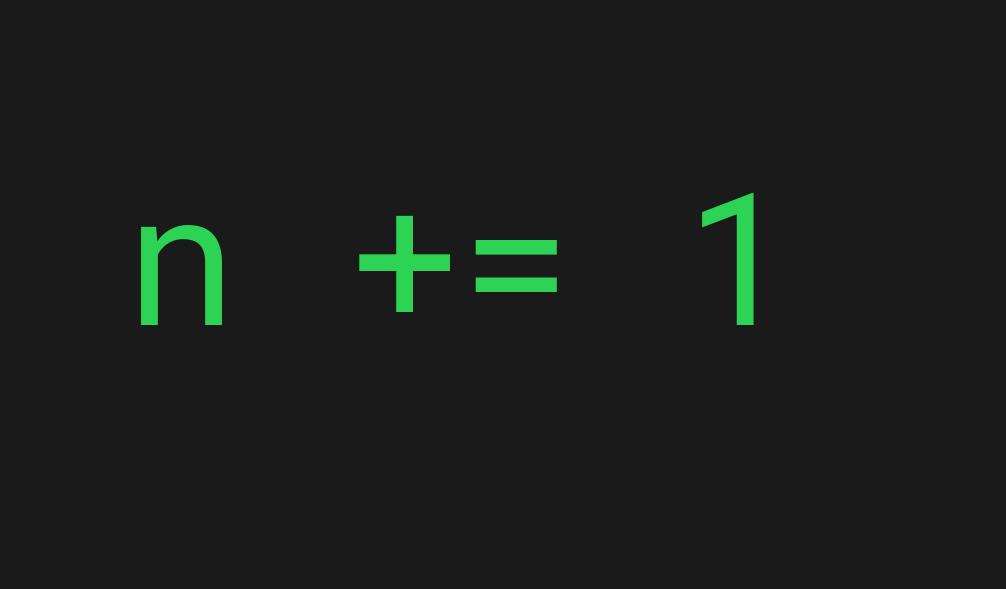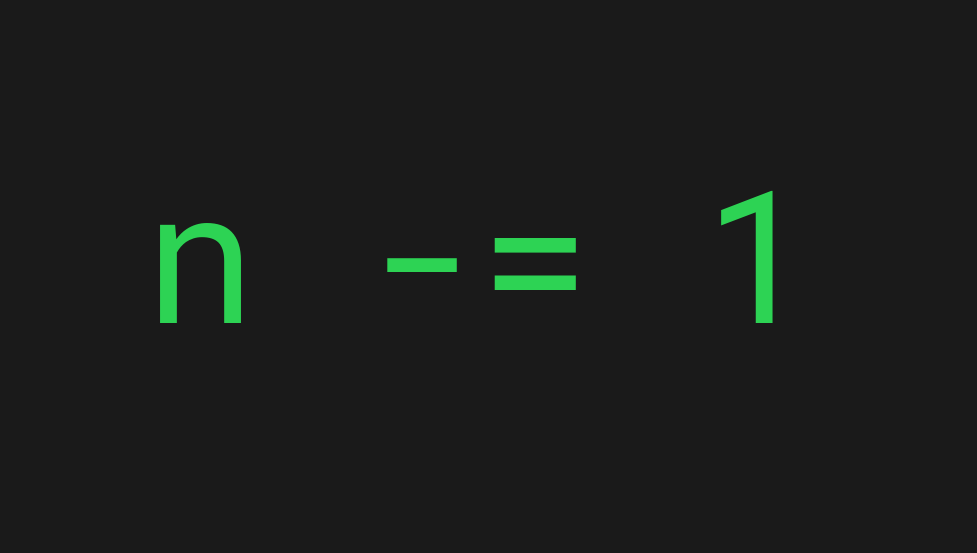
Python does not have traditional increment and decrement operators, like ++ or --.
Instead, Python uses augmented assignment operators, which combine the assignment operator (=) with a mathematical operation, such as addition (+=) or subtraction (-=).
For example, to increment a variable x by 1, you can use the augmented assignment operator x += 1 instead of the traditional increment operator ++x.
Here are some examples:
a = 10 b = 5 # Increment by 10 a += 10 # Decrement by 15 b -= 15 print(a) print(b)
Output:
20 -10
Python Increment and Decrement Operators (‘+=’ and ‘-=’)
Instead of using the ++ and -- operators for incrementing/decrementing, Python uses += and -= operators respectively.
Let’s take a closer look at how these operators work.
1. The += Operator


In Python, the augmented assignment operator += adds the right-hand operand to the left-hand operand and assigns the result to the left-hand operand.
For example:
x = 5 x += 2 print(x) # Output: 7
After this code is executed, the value of x will be 7. The expression x += 2 is equivalent to writing x = x + 2.
Notice that the augmented assignment operator can be used with a variety of data types in Python, including numbers, strings, and lists.
# Add a number to a variable x = 5 x += 2 # x is now 7 # Concatenate a string to a variable s = "Hello" s += " World" # s is now "Hello World" # Append an item to a list l = [1, 2, 3] l += [4] # l is now [1, 2, 3, 4]
The += operator provides a concise and convenient syntax for doing increments in a single statement.
2. The -= Operator


In Python, the augmented assignment operator -= subtracts the right-hand operand from the left-hand operand and assigns the result to the left-hand operand.
For example:
x = 5 x -= 2 print(x) # Output: 3
After this code is executed, the value of x will be 3. The expression x -= 2 is equivalent to writing x = x - 2.
Unlike the += operator, you cannot use the -= operator on strings or lists.
Why No ++ Operator in Python
In Python, the ++ and -- operators do not exist because they would not be considered operators at all.
In Python, all statements that modify the namespace (i.e. variables, functions, etc.) must be explicitly written out as statements. This means that if ++ and -- were included in Python, they would have to be written as separate statements rather than operators. This would make the syntax less concise and even a bit more confusing.
One of the main reasons the ++ operator is used in other programming languages, such as C or C++ is to keep track of the index in a loop.
In place of traditional increment and decrement operators, Python provides tools that can be used to achieve similar results. For example, you can use the enumerate() function to iterate over a list and get the index of each element, which replaces the need for ++ or — operators in a loop.
How Does Python Read ++?
This part is optional read as it just shows you how Python evaluates x++ or ++x.
1. x++ Gives Syntax Error
In Python, the + operator is an assignment operator. It’s an operator that needs to be placed between two addable values, that is, numbers in this case. Because + is not a number, doing x++ results in a syntax error as + is not a number.
2. ++x Is Just x
The pre-increment operator (++x) in Python is also meaningless.
The unary + operator is an identity operator and simply returns the value in front of which the operator is placed.
For example +5 is just 5 or +100 is just 100.
The same goes for multiple ++ operators.
For example, ++5 = +(+5) = +5 = 5.
Summary
In Python, the augmented assignment operators += and -= combine the addition/subtraction and assignment operations. These operators provide a convenient syntax for performing an operation and assignment in a single statement.
For example, the expression x += 2 is equivalent to writing x = x + 2, and the expression x -= 2 is equivalent to writing x = x - 2.
Python does not have increment and decrement operators (such as ++ and --) like some other programming languages. Instead, these operations can be performed using the += and -= operators, respectively.
Thanks for reading. Happy coding!